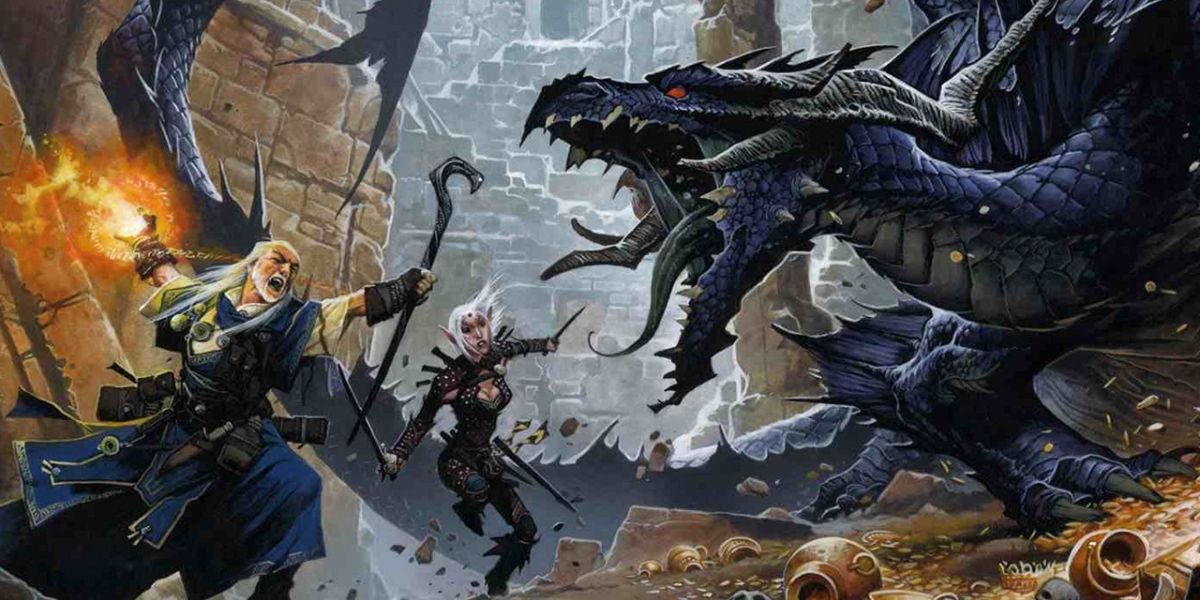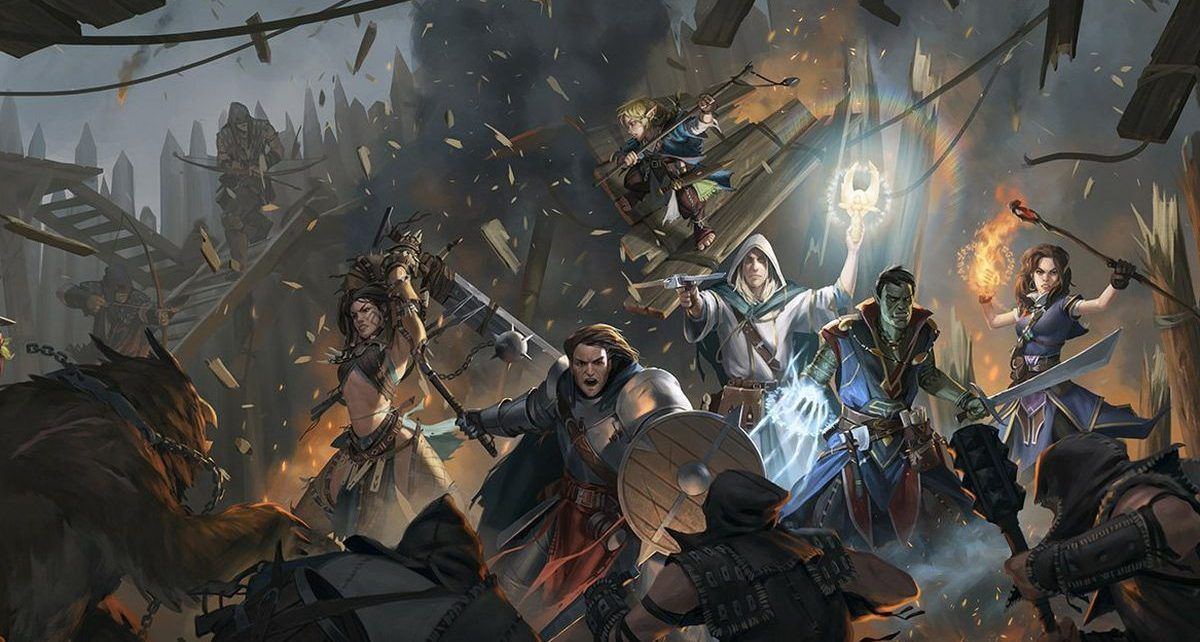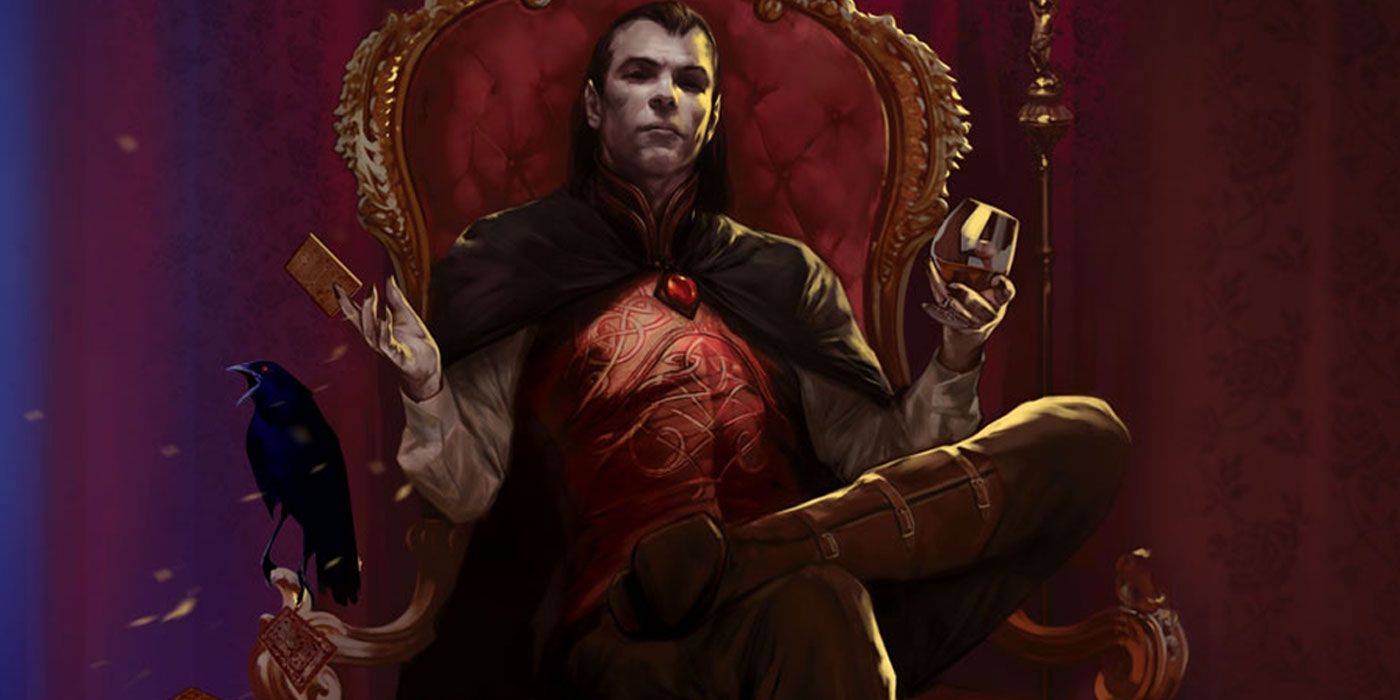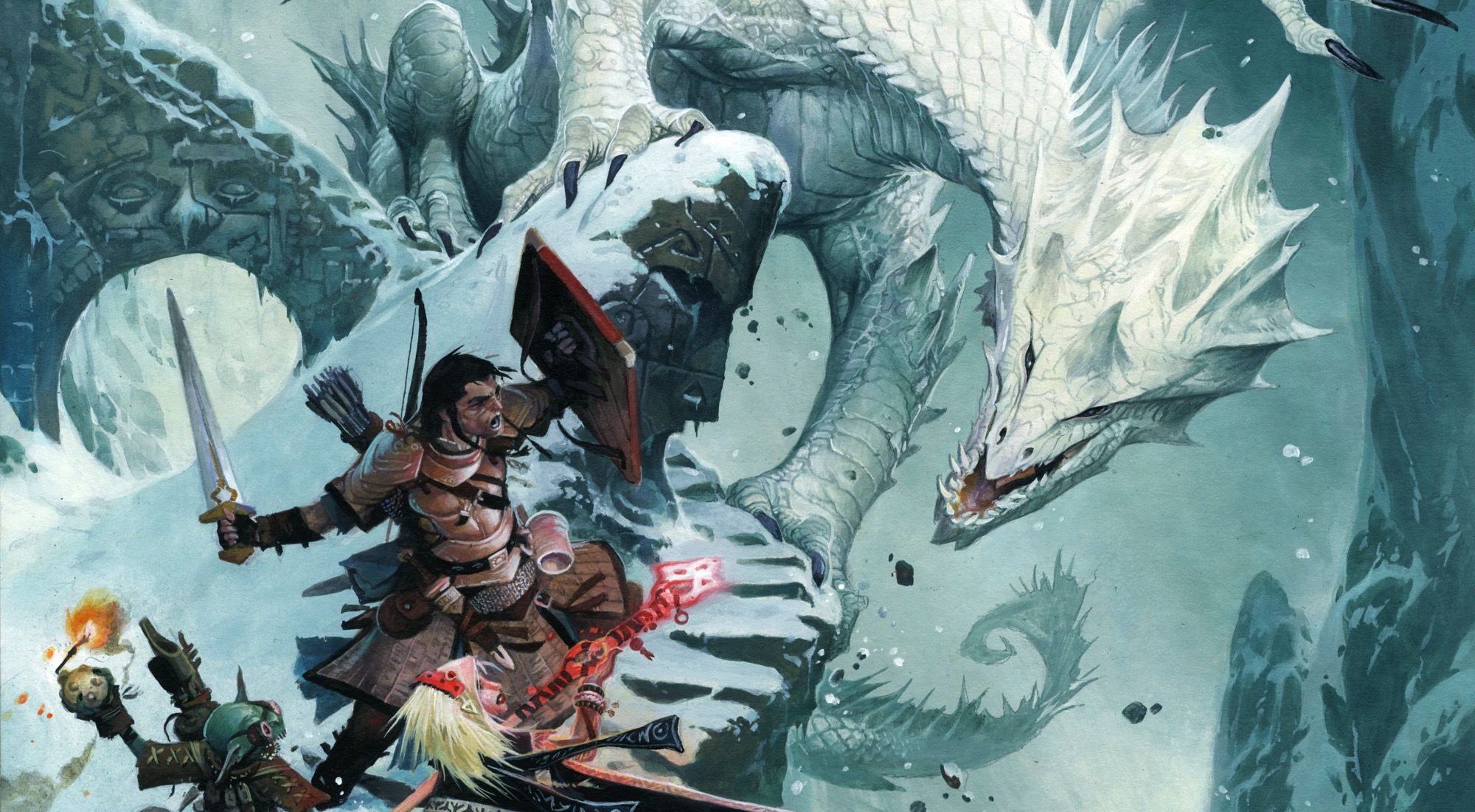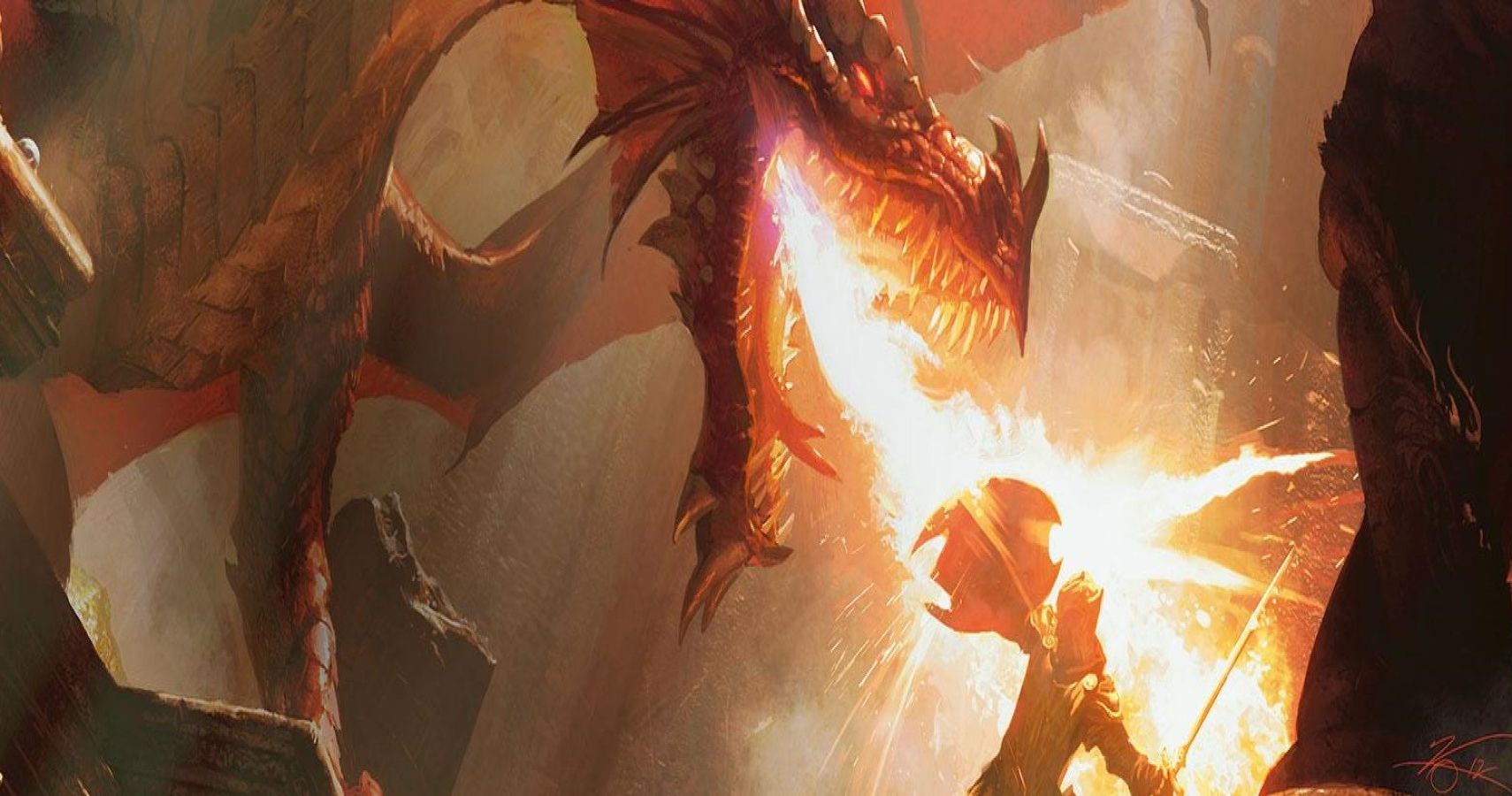When it comes to fantasy tabletop games, Dungeons & Dragons has something of a monopoly over the genre. It's remained popular since its release over 40 years ago, offering nerds all over an opportunity to live out their greatest power fantasies, provided they know how to perform basic calculations and roll dice.
However, in 2008, following the mixed reception Dungeons & Dragons Fourth Edition recieved, Paizo Publishing released Pathfinder. The new game was heavily based on the more popular Third Edition of Dungeons & Dragons. The two tabletop franchises have expanded in popularity in the years which followed, and both have released subsequent editions: Dungeons & Dragons Fifth Edition and Pathfinder Second Edition. To a newcomer, it might be hard to discern which franchise is worth your time. Let's take a look at each and determine which tabletop game is right for you.
The Original Appeal of Pathfinder
Dungeons & Dragons Fourth Edition contained various changes to gameplay mechanics, which fans of Dungeons & Dragon 3 and 3.5 found unfavorable. Many argued that Wizards of the Coast were trying to capitalize on the success of MMORPGs like World of Warcraft when reworking 4e's gameplay by putting more of an emphasis on tactics over the open possibilities of roleplaying. Fans hoping for an update and re-polish of 3.5's popular mechanics were left disappointed.
This is where Pathfinder comes in, as it managed to take 3.5's gameplay and simplify some elements while adding a great deal of customization and complexity along the way. What resulted was a game that was far more complicated than 4e, but also way more popular with older fans. It managed to outsell Dungeons & Dragons material up until Fifth Edition came out.
Pathfinder maintained what fans liked about the older mechanics. Established tabletop veterans recommended Pathfinder over 4e, which led to the new players they introduced to become fond of the system. The system offered a myriad of races, classes and the like to choose from, tons of potential skills and plenty of monsters and enemies. Pathfinder incorporated diverse inspirations, including monsters from various cultures and Lovecraftian horrors alongside the standard orcs, trolls and goblins fans love.
Simplified Mechanics vs. Complex Mechanics
Dungeons & Dragons 4e's failure to connect to audiences led Wizard of the Coast to return to the drawing board for Fifth Edition. Dungeons & Dragons 5e simplified its mechanics so that anyone could pick up and play the game. They refined classes and races by combining things like ability checks whenever possible. For example, in earlier editions, many races would have negative ability modifiers. In 5e, racial modifiers added (but didn't take away) ability points. The older mechanic of adding and subtracting points to ability checks was replaced by the advantage/disadvantage system, where players simply roll twice and take the higher or lower of either roll when calculating ability checks. This helped refine and simplify the gameplay systems without taking anything away.
One huge element that did change, however, was that 5e was the first edition of Dungeons & Dragons that didn't require a grid and figurines. The entire game could be played with the players' collective imagination. However, just because players didn't need a grid and figurines didn't mean players couldn't use a grid and figurines. This made the game more accessible for everyone, offering options for new and old players.
Dungeons & Dragons 5e proved to be a huge success for Wizards of the Coast. While Pathfinder still appealed to old school fans who grew up with 3.5's gameplay and preferred that higher level of complexity, 5e attracted an entirely new and larger audience than ever before. This convinced Paizo that they needed a new edition of Pathfinder to compete. However, unlike the various editions of Dungeons & Dragons that reworked gameplay dramatically (for better or worse), Pathfinder Second Edition refined what was already there without making any drastic changes. However, by remaining true to prior editions, Pathfinder Second Edition chose to ignore the well-received changes 5e made to focus solely on refining what fans already liked about Pathfinder.
That isn't to say that Pathfinder Second Edition is as complicated as its first edition counterpart. The original Pathfinder included tons of added numbers and factors to consider when rolling for attacks and statuses. This has been drastically simplified with Second Edition. In addition, Feats play a far more prominent roll in Second Edition than in the First.
Balancing Issues
Undeniably, a huge issue with Pathfinder and older editions of Dungeons & Dragons is balance. While players could play any class and character combination they so desired, certain classes and races were deemed so powerful that they'd almost break the game. In Pathfinder, one class that could be incredibly powerful was the Gunslinger. Magic-centric classes tended to be able to one-shot entire encounters that more physical characters, such as Rogues or Monks, could barely handle as a team.
One decision made by Dungeons & Dragons 5e that Pathfinder Second Edition didn't emulate was making every class more balanced. The Rogue's sneak attack bonus in 5e can deal nearly as much damage to an opponent as some of the more powerful Wizard spells once the Rogue levels up a bit. While sneak attack, by contrast, is still powerful in Pathfinder, it never reaches the sheer intensity it does in 5e. Instead, Rogues simply can take on more feats, which, again, can put them at a lower level than a powerful Wizard. Many people prefer the re-balanced characters of 5e because any character can make a difference in a campaign.
However, some players prefer the old way, as it allows for a more realistic divide between magical and physical-centric characters. It also forces weaker characters to better utilize their skills in order to be effective.
So Which Should I Play?
Which tabletop game is best for you depends on what you want to get out of your experience. Do you want to play in an imaginative setting that allows for user-friendly content with very flexible rules? Then Dungeons & Dragons 5e is the undeniable choice for you. By contrast, if you want a game with involved, complex mechanics and a great deal of customization, then Pathfinder might better suit your needs.
At the end of the day, both games are a lot of fun. However, if you're playing with new players, the better choice might be 5e. Pathfinder is favored by old-school tabletop fans because it retains the sometimes math-intensive gameplay of yesteryear. Ultimately, your decision to play one or the other will not be decided by the balancing or customization, but rather how much you want to do math while trying to live out your fantasies.

